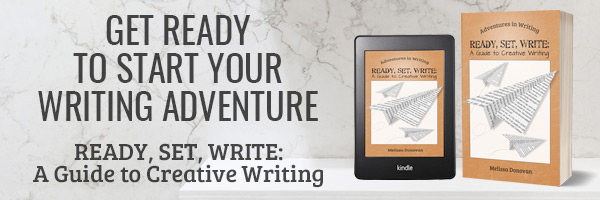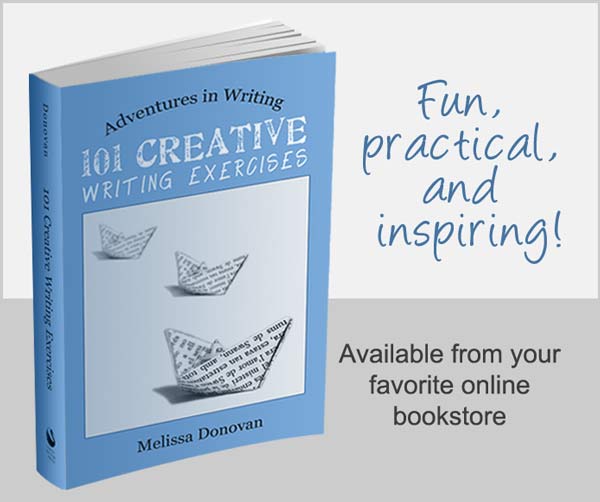One of the greatest skills that a writer can possess is the ability to make readers feel something. If you can engage readers on an emotional level, you’ll have them hooked. This effect is called emotional resonance.
Think about it: Most of the books, poems, movies, and TV shows that you love best are the ones with which you forged an emotional connection. You felt like the characters were your friends, so you felt for them. You felt with them.
In performances, actors, writers, and directors collaborate to create emotional resonance. But in written works, it falls to the writer to evoke an emotional response from the readers, and it’s usually a complex and difficult endeavor.
Emotional Writing
Let’s look at a few techniques we can use to produce emotional writing:
Draw from Experience
You’ve experienced a range of emotions throughout your life. When you want to convey an emotion and incite that emotion in readers, draw on your personal experiences. Your experience doesn’t need to be identical to whatever you’re writing about, but it should be close and generate a similar emotional response.
Relive the Feeling
Sometimes drawing from experience isn’t enough. You might need to relive an experience. That’s not so bad if you’re writing about your first trip to Disneyland. But it will be unpleasant if you’re writing about something painful. I once wrote a scene in which a character watched the caskets of two loved ones descend into the earth. I closed my eyes and recalled the first time I saw a casket descend, and whole thing came flooding back. Not only did I relive the feelings, I saw the scene replaying in my mind’s eye, which provided details that ended up in the passage I was writing. It was painful, but it worked.
Use Accessible Language
Readers are unlikely to have an emotional reaction to material that’s written in an academic or businesslike tone. Writing that is friendly or casual is more likely to put the reader at ease, which means they’ll be less guarded with their emotions. They’ll be nice and primed when you’re ready to hit them with some intense, emotional writing.
Use Imagery
You’ve heard the adage: show, don’t tell. If a character is sad, you don’t write, Kate was sad. You write, Kate lowered her eyes and swallowed hard, choking back a sob and blinking away the tears that welled up in her eyes. When a reader can visualize another person’s anguish, they’re more likely to have an empathetic (emotional) reaction.
Incorporate Storytelling
If you’re not writing an actual story, you can still use storytelling to engage readers on an emotional level. A single image can tell a story. For example, imagine a child, about ten years old, walking a bike down the street. One of the bicycle wheels is bent. The child is crying, there’s a hole their jeans, and their knee is bloody. This is the story of a kid who took a bad fall. Stories work well when you want to demonstrate something (like why kids should wear knee pads). If done well, a story is almost guaranteed to draw a reader into the writing.
Dialogue
Feelings can be revealed through dialogue. When you use imagery and dialogue together to show (rather than tell) the reader what is happening and to reveal the emotional aspect of the situation, the reader visualizes the action and might experience the characters’ emotions right along with them:
“Jack, stop talking. I’m not going with you,” Kate said.
“What do you mean you’re not going with me? We’re supposed to go together.”
“We’re not together, Jack. We were, but not anymore.”
Jack couldn’t believe his ears. “You’re leaving me?” he asked.
“That’s right,” she said. “You and me — it would never work.” She started to turn and paused briefly. Jack thought she had changed her mind. He saw her hand flicker, and for an instant, he knew she was about to reach for him, but then she pulled her hand back, turned on her heels, and walked off.
“That’s it? You’re just going to walk away?” he screamed. She didn’t stop, didn’t even flinch. Jack hung his head. “You’re just going to walk away,” he whispered.
Notice the rise and fall of emotion in this dialogue. There are only a couple of cues — most of the emotion is contained within the dialogue itself. This makes reading an experience, and it helps readers connect on an emotional level.
Use Teasers
One of the best emotions for writers to engage is anticipation. Get the reader excited by sprinkling teasers throughout your writing. Whether you’re handing out information or unraveling a story, the occasional hint about what’s around the corner is a simple yet effective way to create a little excitement, and the tone of the piece will color the reader’s anticipation. If they’re reading a thriller, they could be be on the edges of their seats. If they’re reading a self-development book, they could be filled with hope.
Getting Emotional in Writing
Readers who are emotionally invested in a piece of writing are more likely to keep turning pages, to tell their friends about it, and to read more of your work. It doesn’t matter which emotions you engage; make readers feel something — anything — and they will reward you, because you gave them an experience.
Do you incorporate emotions into your writing? Which techniques do you employ? What has your experience with emotional writing been as a reader? Did a piece of writing evoke a particularly strong emotional response in you? Why? Share your thoughts and experiences with emotional writing by leaving a comment, and keep writing.






Thanks for the tips Miss!
My pleasure!
this TRULY helped!
i was supposed to write an emotionally stirring story while listening to certain music clips…and was really lost. This really really helped me get started = )
Thanks, Brinda. Thanks for letting me know that you found this useful.
Telling vs showing is something my writing groups began pounding into my head from day one. Of couse, it took months for me to grasp it. I found it a bit easier to spot when I realized that the majority of “telling” contains “was,” just as in your examples above.
I also recently (well, last night!) learned that emotional attachment can still be lacking. I wrote a short story about a man who cares for his mother until she dies of breast cancer. Twenty years later, he’s dying of the same disease and, yet, most everyone got to the end and felt, “and so?” The emotional attachment to him wasn’t strong enough. So much for one critic saying “there’s a sparseness to his writing that is refreshing.” LOL!
Always learning, always learning… and I find your blog (and book, BTW) to be a huge help.
It took me a while too, but that was mostly because I kept hearing “show, don’t tell” without an example or any further explanation. I think if the author can connect emotionally with the character, then the reader will too. When I develop characters, if I don’t absolutely love or loathe them, I kick them to curb!
Even though I had the whole ‘show and don’t tell’ in back of my mind from reading, I haven’t had it explained clearly to me until today. ‘Preciate it!
Thanks, Jesse! I’m glad this article helped you understand “show, don’t tell.” Keep writing!
Hey Melissa
Great post, thanks
I normally write fantasy, so it’s a nice change to write in the real world. Bringing depth of emotion into fantasy is one of my aims, so thanks for the tips.
cheers
Mike
Thanks, Mike! I’m glad you liked these tips. Keep writing!
Thank you for those tips the image was so clear. one could almost see her walk away and him wipe the tears away I can see what show not tell means now
Thanks, Joan. I thought an example would help demonstrate these concepts. It seems to have worked.
Thanks for these tips.
You’re welcome!
Great tips, Thanks for sharing!
Thanks, Nisha. You’re welcome.